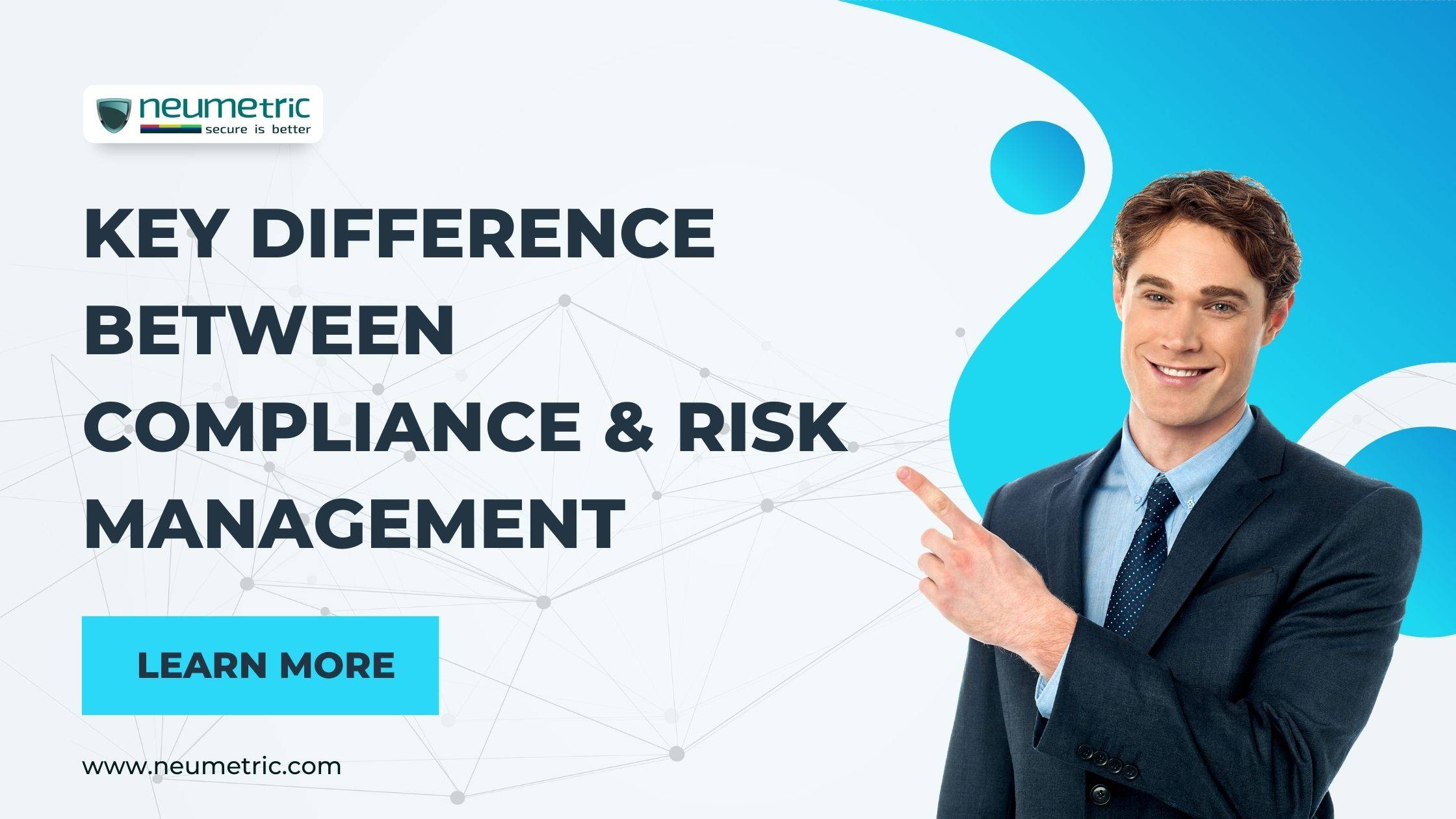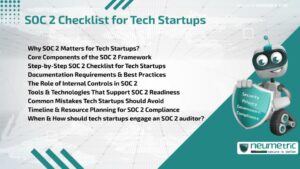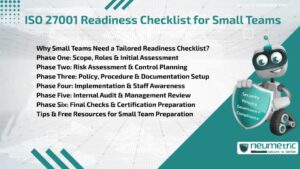Table of Contents
ToggleIntroduction
The observance of established rules, regulations & standards controlling an organization’s operations is referred to as compliance. It entails aligning corporate activities with legal requirements, industry standards & internal policies in order to assure ethical behaviour & avoid legal ramifications.
Risk management, on the other hand, is a proactive strategy to detect, assess & reduce potential risks to an organization’s objectives. It entails a methodical process of identifying uncertainty & devising solutions to efficiently navigate them.
For organisational leaders, the distinction between compliance & risk management is critical because it underpins strategic decision-making. While compliance guarantees that established norms are followed, risk management identifies & addresses uncertainties that may impede an organization’s success. Recognising these distinctions is critical for building domain-specific tactics.
This article aims to explore the key differences between compliance & risk management. It will delve into the individual definitions, discuss their significance & provide a structured analysis of their distinctions.
Understanding Compliance
Compliance is the observance of a set of rules, regulations & standards that apply to the activities of a company. It covers a wide range of issues, ensuring that the organisation operates ethically, legally & in conformity with different external & internal regulations. Compliance encompasses everything from legal regulations & regulatory mandates to internal policies developed by the organisation.
The basic goals of compliance are to prevent legal repercussions, develop an environment of honesty & ensure that the organization’s operations adhere to set norms. Compliance protects against regulatory fines, lawsuits & reputational harm. Furthermore, it creates a foundation for ethical behaviour, fostering transparency & trust among stakeholders.
Examples of Compliance Areas:
Legal Compliance: Legal Compliance entails abiding to laws at the local, national & international levels. This covers labour laws, data privacy rules & contractual requirements. Noncompliance with legal statutes can result in serious legal consequences, affecting a company’s financial viability & reputation.
Regulatory Compliance: Regulatory compliance refers to meeting the standards imposed by industry-specific regulatory organisations. Finance, healthcare & environmental management are examples of industries with diverse regulatory frameworks that organisations must navigate to maintain compliance. Noncompliance may result in regulatory fines & operational interruptions.
Unraveling Risk Management
Risk management is a proactive & methodical technique to detecting, assessing & reducing risks that may have an impact on an organization’s goals. It entails comprehending uncertainty & devising ways to mitigate the negative consequences of potential events. Risk management encompasses all aspects of the organisation, including financial, operational, strategic & reputational risks.
The primary goals of risk management are to preserve organisational value, protect assets & ensure that strategic objectives are met despite uncertainties. Organisations can improve decision-making processes, resource allocation & resilience in the face of problems by identifying & managing possible risks.
Components of a Risk Management Framework:
Risk Identification: The first stage in risk management is to identify potential threats to the organisation. Internal & external factors that may represent risks or opportunities are included.
Risk Assessment: Once discovered, risks are evaluated based on their likelihood & potential impact. This stage aids in risk prioritisation by concentrating attention on those with the greatest potential influence on organisational goals.
Risk Mitigation: Risk Mitigation is the process of finding methods to reduce the possibility & impact of identified risks. Implementing preventive steps, developing contingency plans, or transferring certain risks through insurance are all examples of this.
Risk Monitoring: Continuous monitoring is essential to track changes in the risk landscape. Regular evaluations ensure that the risk management framework remains effective & adaptable to evolving circumstances. Monitoring also allows organizations to identify new risks & adjust strategies accordingly.
Key Differences Between Compliance & Risk Management
A. Primary Focus
Compliance: Conforming to established standards, regulations & recommendations is fundamental to compliance. It is the organization’s pledge to follow the regulations established by external agencies, ensuring that its actions are consistent with defined norms.
Risk Management: The fundamental focus of risk management, on the other hand, is the discovery, appraisal & mitigation of potential risks that could jeopardise the achievement of organisational objectives. It entails taking a proactive approach to uncertainty rather than strictly adhering to preset norms.
B. Time Scale
Compliance: This occurs frequently. Immediate & driven by regulations. Compliance initiatives are frequently time-sensitive, motivated by the need to fulfil specific regulatory deadlines or respond to changes in legal requirements. It highlights the organization’s capacity to quickly align with external norms.
Risk Management: Risk management is essentially strategic & operates over a longer time horizon. It entails a continuous process of predicting & planning for anticipated future occurrences while keeping the organization’s long-term goals & sustainability in mind.
C. Nature of Activities
Compliance: Adherence to Prescribed Rules is referred to as compliance. Compliance activities are distinguished by strict adherence to predetermined rules & regulations. Organisations develop processes & policies to ensure that all actions follow the text of the law.
Risk Management: Risk management, on the other hand, entails anticipating future risks. Rather than following predefined rules, anticipating obstacles & developing solutions to limit their impact demands a dynamic & forward-thinking approach.
D. Inherent Objectives
Compliance: The inherent objective of compliance is to avoid legal consequences & penalties. By strictly adhering to regulations, organizations seek to ensure that their actions are within the boundaries of the law, reducing the risk of legal implications.
Risk Management: The primary objective of risk management is to safeguard the organization against uncertainty. It goes beyond legal compliance, aiming to protect the organization from a wide range of potential risks that could affect its objectives, reputation, or financial stability.
Overlapping Aspects: Where Compliance & Risk Management Meet
Shared Governance Foundation:
Both compliance & risk management play critical roles in effective governance. The overarching structure that leads & directs organisational activity is known as governance. Compliance guarantees that these operations are in accordance with external & internal standards, whilst risk management adds to governance by detecting, assessing & reducing any uncertainties that could jeopardise the organization’s goals. They form a strong governance framework that encourages ethical behaviour, risk resilience & long-term sustainability.
Importance of Effective Communication:
When it comes to compliance & risk management, effective communication is essential. Communication that is clear & open is essential for ensuring that all stakeholders, both internal & external, are aware of compliance obligations & potential risks. Organisations can use communication methods to define their commitment to compliance, communicate risk mitigation strategies & develop a culture of awareness & accountability. Communication synergy in both domains improves overall governance by encouraging understanding & alignment across the organisation.
Technology’s Role in Improving Both procedures:
Technology has a critical role in improving both compliance & risk management procedures. Data analytics, artificial intelligence & automation are examples of advanced technologies that give tools for efficient data processing, real-time monitoring & predictive analysis. Technology assists in tracking & guaranteeing conformity to regulations, automating compliance inspections & preserving accurate records in compliance. Technology enables organisations to identify emerging hazards, conduct scenario analysis & execute risk mitigation techniques in risk management. By providing fast & precise information, the integration of technology in both areas not only enhances efficiency but also strengthens the whole governance structure.
Common Challenges in Compliance & Risk Management
Compliance Issues: Employees that are resistant to adapting to new policies & processes are frequently faced in the field of compliance. To overcome this resistance, good communication, training programmes & highlighting the benefits of compliance for both individuals & organisations are required.
Risk Management Difficulties: Resistance to risk management may occur when staff are not used to taking a proactive approach. Persuading stakeholders of the need of identifying & reducing risks before they occur is a common difficulty. Employee resistance can be reduced by educating & integrating them in the risk management process.
Aligning Compliance & Risk Management activities: Integrating compliance & risk management activities inside an organisation can be difficult because they frequently function in different silos. Aligning these functions necessitates a comprehensive approach to governance that emphasises the interdependence of compliance & risk management. These gaps can be bridged by forming cross-functional teams & encouraging collaboration.
Managing Organisational Silos: Silos inside an organisation, where various departments function independently, provide compliance & risk management issues. Breaking down these silos entails cultivating a culture of shared accountability & ensuring that information flows smoothly across departments. This approach can be aided by integration tools & cross-functional training programmes.
Future Trends in Compliance & Risk Management
The future of risk management & compliance is inextricably linked to technology breakthroughs. Artificial intelligence [AI], machine learning & data analytics are among the emerging technologies poised to revolutionise various fields. AI has the potential to improve predictive risk analysis, automate compliance monitoring & deliver real-time insights into changing regulatory landscapes. Technology-driven solutions not only increase efficiency, but also allow organisations to keep ahead of potential hazards & compliance issues.
The rising emphasis on Environmental, Social & Governance [ESG] factors is a crucial trend determining the future of compliance & risk management. Organisations are recognising the importance of incorporating ESG concerns into their governance frameworks as stakeholders demand greater corporate accountability. Future compliance & risk management techniques will almost certainly include ESG measures, ensuring that environmental sustainability, social responsibility & ethical governance are all part of decision-making processes.
The regulatory landscape is ever-changing & its evolution has a constant influence on compliance & risk management. Rapid technological breakthroughs, globalisation & societal demands all contribute to a constantly evolving regulatory environment. To handle new compliance requirements & rising threats, organisations must remain nimble & adaptable. Future trends indicate that organisations will need to invest in regulatory intelligence technologies, conduct proactive regulatory risk assessments & establish strategies to anticipate & adapt to regulatory changes.
Conclusion
It is critical to explore the main differences between compliance & risk management. Compliance refers to following existing rules & regulations while also ensuring consistency with external standards. Risk management, on the other hand, takes a proactive approach, detecting & reducing potential risks in order to protect organisational objectives. Understanding these contrasts is critical to good governance.
The indicated future trends emphasise the significance of addressing compliance & risk management as interconnected components of a comprehensive governance approach. Organisations may develop resilience, handle risks & prosper in a fast changing business environment by integrating these tasks.
As organisations design their future route, there is a clear call to action: adopt a holistic governance approach that incorporates compliance & risk management. This strategy entails harnessing technological breakthroughs, embracing ESG issues & remaining aware of changing regulatory landscapes. Organisations can position themselves for long-term success & resilience by implementing a comprehensive strategy that addresses both compliance obligations & potential hazards.
The future of compliance & risk management is marked by technological innovation, a heightened focus on ESG factors & the need for adaptability in the face of evolving regulations. By embracing these trends, organizations can foster a governance framework that not only meets current challenges but anticipates & addresses future complexities, ensuring their ability to thrive in an ever-changing business landscape.
FAQ’s
- How will technological advancements impact the future of compliance & risk management?
Technological advancements, including AI & data analytics, will enhance efficiency by automating compliance monitoring & providing real-time insights into evolving risks.
- Why is there a growing emphasis on integrating ESG factors into compliance & risk management strategies?
Integrating Environmental, Social & Governance [ESG] factors ensures organizations consider sustainability, social responsibility & ethical governance, meeting stakeholder demands for corporate responsibility.
- What are the key differences between compliance & risk management?
Compliance focuses on adhering to established rules & regulations, while risk management proactively identifies & mitigates potential risks to safeguard organizational objectives.





